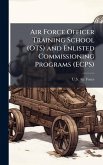Major Kosan discusses the deficiency in the US Air Force's ability to precisely attack mobile targets at standoff ranges with minimal collateral damage as revealed by recent airpower operations. He addresses the technological as well as the international, national, and military strategic environmental issues that may affect technology. Major Kosan focuses on USAF munition precision engagement capabilities; thus, he does not perform an in-depth analysis of aerial platform precision engagement capabilities. He focuses on only USAF's research, development, and acquisition strategy in regards to precision conventional strike capabilities against mobile targets. Major Kosan predicts that future airpower operations will be executed in politically sensitive strategic environments and will require the ability to precisely destroy mobile targets that may have been strategically placed by an adversary in areas with high risk of collateral damage. This work has been selected by scholars as being culturally important, and is part of the knowledge base of civilization as we know it. This work was reproduced from the original artifact, and remains as true to the original work as possible. Therefore, you will see the original copyright references, library stamps (as most of these works have been housed in our most important libraries around the world), and other notations in the work. This work is in the public domain in the United States of America, and possibly other nations. Within the United States, you may freely copy and distribute this work, as no entity (individual or corporate) has a copyright on the body of the work. As a reproduction of a historical artifact, this work may contain missing or blurred pages, poor pictures, errant marks, etc. Scholars believe, and we concur, that this work is important enough to be preserved, reproduced, and made generally available to the public. We appreciate your support of the preservation process, and thank you for being an important part of keeping this knowledge alive and relevant.
Bitte wählen Sie Ihr Anliegen aus.
Rechnungen
Retourenschein anfordern
Bestellstatus
Storno








